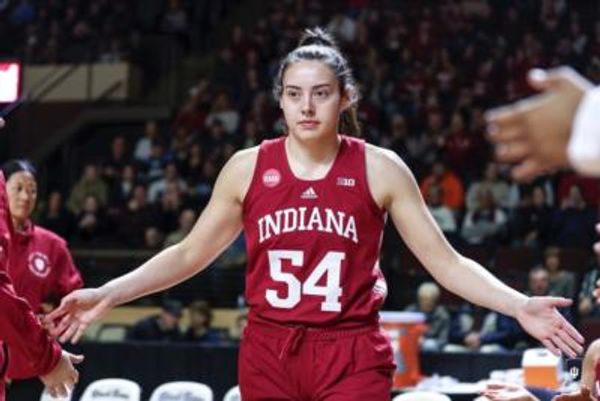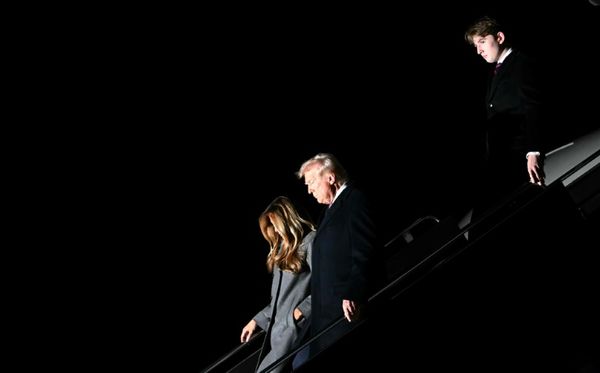
Those of us who made aliyah from Western countries in the 1970s probably came here with little or no knowledge of the ethnic-sociopolitical divide that was very much part and parcel of everyday life here back then.
Bluntly put, the Ashkenazim had ruled the political and cultural roost from the start, and large sections of the Sephardi population found themselves marginalized and way down the standard of living ladder. This translated into poor living conditions, inferior educational offerings and high levels of unemployment.
Things came to a head in 1971, when younger members of the Moroccan residents of the Musrara neighborhood in Jerusalem decided enough was enough and the Black Panthers protest movement came to be – in no uncertain manner.
The half-century milestone of that seismic game changer is currently being marked with three exhibitions in Musrara: the Naggar School of Art and Society; two in the buildings that comprise the Ronnen Harary Campus; with a third at Canada House, the local community center located a hop, skip and jump away on Shivtei Yisrael Street.
The three shows are the centerpiece of this year’s edition of the “Photopoetics” festival, which goes by the umbrella biblical-leaning title of “In the Beginning Protest” and feeds off the disciplinary interface between photography, video, plastic art and poetry. They take in a well-balanced mix of documentary material from when the Panthers were in full, often muscular, flow – and contemporary renditions and presentations of sociopolitical friction and fractured communities.
They also embrace a wider protest purview relating to the challenges and deeds of a range of activists across the years, including Vicki Knafo, who caused quite a stir in 2003 when she walked from her home in Mitzpe Ramon to the Knesset in Jerusalem in support of single mothers’ rights. Women who have championed the cause of foreign workers and other downtrodden of Israeli society, including Social Worker Union head Inbal Hermoni, are also acknowledged.
THE SCHOOL is a natural setting for the showing, in geographic and political terms. It is located slap bang where it all began for the Black Panthers, and since its founding in the mid-1980s by still-incumbent director Avi Sabag, has sought to continue examining burning social and sociopolitical issues.
Sabag, himself, is a case in point. The 62-year-old director was born in Morocco and came here with his family at the age of four.
“I don’t see myself as a Mizrahi, rather as a Moroccan Jew.”
There is a cultural and also a geographic principle here.
“I am not Mizrahi (eastern) because, firstly, I come from northwest Africa, so why should I be termed as Mizrahi? That’s ridiculous. I am not talking about the concept of ‘the Orient’ as it was portrayed by [Egyptian-born] writer Jacqueline Kahanoff, who talked about the Orient as an elevated place, and the cultural values that came from Alexandria and the Zohar [kabbalistic book published in 13th century Spain] and the Spanish-Andalusian experience. That’s not the Orient referenced by the Ashkenazi leadership.”
The powers that were, says Sabag, negated the right of Sephardi Jews to continue to celebrate the rich cultural climes and the associated baggage they brought here when they made aliyah.
“The Ashkenazi establishment told us we are not Arabic Jews because Arabs are the enemy. They said we were Mizrahim. How come you can be an American Jew or a Russian Jew but you can’t be an Arabic Jew? There is political baggage here. That is abrogating your identity.”
Sabag believes the Black Panthers kickstarted much more than a gradual evolution of a more level playing field here, and a fairer split of the national budget cake. He says the spleen-venting of the inhabitants of Musrara oiled the state sociopolitical wheels and eventually led to a shake-up in the seat of power.
“The victory of the Likud in the 1977 elections was sparked by the actions of the Black Panthers from Musrara. And I think the emergence of [Mizrahi haredi political party] Shas is also a by-product of that. They were also suppressed by the Lithuanian [Ashkenazi] haredi sector. Discrimination didn’t come just from the secular establishment, it also came from haredi quarters, which we still see today. That is incredible.”
Sabag says there is still much to be learned from the uprising of the early 1970s, and we continue to repeat the same mistakes.
“Look at how the Russian olim were treated in the 1990s, the Ethiopians and even the refugees who came here from Africa, foreign workers. We keep on discriminating.”
As far as Sabag is concerned, that goes against the moral grain and contravenes the moral foundations of Israeli society.
“It subverts the ethos of the Jewish credo of respecting those who are different from us. I don’t think the Black Panthers were really politically motivated but, of course, they had political implications.”
They certainly did, and we are introduced to some of the key figures in the struggle in the Canada House exhibition. The multifarious spread across two floors of the building includes striking and highly emotive images and texts that first saw the light of day in published form in the Black Panthers book, compiled by Sabag and put out in the mid-1990s.
There are scenes there from violent clashes with the police, for example, at a demonstration near Zion Square in Jerusalem that, we learn, got a permit only at the second time of asking.
The likes of movement leaders Saadia Marciano and Charlie Biton are in there, and both later served as MKs, Marciano briefly and Biton for 15 years. The latter remains one of the more vociferous and combatant of the former Black Panthers. Reuven Aberjil and Koko Deri are also featured in the spread.
NOW 67-YEAR-OLD Deri has quite a story to tell. He is the only one of the erstwhile Panthers honchos to be still living in Musrara and is now employed as a maintenance worker at the photography school.
Unlike Biton, with whom I had an unplanned unpleasant encounter at the Mahaneh Yehuda shuk some years ago – my blue eyes clearly gave my Askhenazi roots away – Deri comes across as a soft-spoken amiable character.
“I am from here,” he smilingly declares when we meet up in Sabag’s office at the art school. “I was born in the house where I still live, and where we created the [Black Panthers] movement. We were three close friends – myself, Charlie Biton and Saadia Marciano. I am the only one from the movement leadership who still lives in Musrara.”
The locale epithet can be read along various meandering lines.
“I was a student in the [elementary] school that occupied this very building,” he notes, adding that it was not an entirely happy experience. “I didn’t go anywhere before the age of six. I didn’t know there were other kinds of people, who were not from Morocco. Then suddenly my mother tells me to go to school, through the garbage and the narrow alleyways, with other kids from the neighborhood. We were petrified.”
A whole new world, and not a particularly inviting one at that, came into view.
“We met the dossim [ultra-religious] teachers with their peyot. We all sat in the classroom and there was a big banner with all the letters of the aleph-bet and we sat there not knowing what to do. The teachers would hit us on the head with a ruler until we got the letters right.”
The deplorable living conditions and substandard educational environment, says Deri, could only lead in one direction.
“I was arrested by the police, the first time, when I was nine. I was caught stealing a chicken with a friend. We got a sliver of chicken maybe once a week, so if you wanted to get some meat you had to steal it. There was hardly any money for food. I’d come home from school and there would often be nothing to eat in the house.”
Things went from bad to worse for the youngster.
“I remember the policeman kept on hitting me all the way to the station. Then they put me in a cell with adult offenders. The only thing I could learn from that was more sophisticated ways of breaking the law.”
Deri’s vistas opened up in a more constructive didactic way a few years later, paradoxically when he encountered contemporaries from the far side of the class system divide.
“We learned about the Black Panthers in America, the students uprising in Paris in 1968, and all the other revolutionists and revolutions going on around the world in those days, from Ashkenazi kids our own age from Rehavia, Beit Hakerem and the other well-to-do neighborhoods of Jerusalem.”
It was a two-way educational street.
“We met them when we were around 15 or 16, when we started going out and hanging out at bars, looking to have a good time. We met the Ashkenazim our own age with their fine clothes and we told them who we were and where we came from. They had no idea about our lives and Musrara, the Katamonim, and other working-class areas of Jerusalem.
“They had three-roomed apartments, a dog and a piano. In Musrara we all lived in one room.”
The neighborhood, at the time, was stuck between west Jerusalem and the Jordanian-controlled Old City.
“We were right on the edge of no man’s land, with open sewage and stray bullets from Jordanian sharpshooters. The Ashkenazim our age had no concept of the way we lived.”
Rather than looking down on them, the better-off kids expressed support and got involved in the incipient struggle for equality.
“They said: ‘You’re right! You should fight for your rights!’” Deri recalls, adding that it wasn’t just a matter of saying the right thing. They got a little down and dirty too.
“Who do you think wrote our first banners? It was the Ashkenazi kids,” he laughs.
LIKE SABAG, Deri also references the historic shift in political power when Menachem Begin led the Likud to victory in 1977.
“That’s absurd. You had Begin, from Poland, promising the Mizrahim all sorts of things. He was also in the Knesset when the Moroccans were treated so badly and he did nothing until he realized they were a handy electoral card to play.”
Deri shares Sabag’s surprising view that the political leadership at the time was not motivated by racial discriminatory motives. That despite the quote, which has since been proven to be taken somewhat out of context, of then-prime minister Golda Meir that the Black Panthers were “not nice people.”
Both Sabag and Deri believe the leadership’s mistreatment of Jews from Arab countries was a result of ignorance rather than a simple sense of superiority.
“The Ashkenazi leaders were not racists. They were driven by fear of the unknown. They didn’t know what to make of us,” the former Panther posits.
Intriguingly Deri, who displayed admirable knowledge of history throughout our conversation, takes that in an unexpected direction.
“The Ashkenazim had suffered from ‘the others’ in the Holocaust. Suddenly their German friends turned on them. They brought that fear with them here. That’s why they were scared of us.”
Sabag concurs.
“Golda [Meir] wasn’t against the Mizrahim; she just didn’t know anything about them.”
THE LATTER half of the Photopoetics moniker comes through primarily in the texts featured in the “Tongue of Many” exhibition curated by Tali Bin-Nun. The spread includes a diverse mix of video and sound works by school alumni, as well as poems by the likes of Asaf Dvori; late Iraqi-born writer and Black Panther Louise Cohen; and late 19th century-early 20th century Bohemian-Austrian poet and novelist Rainer Maria Rilke. There are more Hebrew textual offerings in the Social Gallery, courtesy of late Cairo-born social activist Vicki Shiran, who promoted Mizrahi Jewish consciousness, and poet and film director Sigalit Banai.
“The idea was to bring a more contemporary, personal and biographical interpretation of the Black Panthers and social activism, rather than putting the Black Panthers front stage with archival material,” Bin-Nun explains.
She has certainly achieved that, with some eye-opening and thought-provoking creations, such as a sound installation by Niv Gafni that conjures up disturbing thoughts of a war siren or, possibly, a grating car horn, and an alluring video work by Miriam Naeh that references Franz Kafka’s 1922 short story “A Hunger Artist.”
“We wanted to follow a more associative and personal line – and the way the artists themselves connect with protest, repression and shouting out loud,” Bin-Nun adds.
The artists put in a shift.
“Niv could have created just a video work with the sound, but he worked hard to embed the zambora (plastic horns) into the walls, so you don’t see them, you only hear them.”
The internment element, the curator suggests, connects with the 1970s struggle and with current efforts to speak out against the political state of affairs.
“That resonates with the predicament of the Panthers. It reflects a sense of censorship by burying the horns in the walls.”
The Musrara event also alludes to an exhibition called “Black Panther White Cube,” which was due to take place at the Ramat Gan Museum in 2010, curated by Shlomit Lir. The show was designed to examine the perceived imbalance in Israel’s art world and to push things in a more open and pluralistic direction. Sadly, a month or so before the opening date, the museum director decided to cancel the exhibition, as he thought it was too politically charged.
“Not much was made of that regrettable decision,” says Bin-Nun, “so I wanted to try to redress that.”
The extensive food for thought the visitor may take away from the “In the Beginning Protest” venture may very well include the notion that we may have made strides on the sociopolitical-human front over the past half century, but there is still plenty left to be done.
The Photopoetics festival closes on June 24. For more information: https://www.musrara.co.il/










